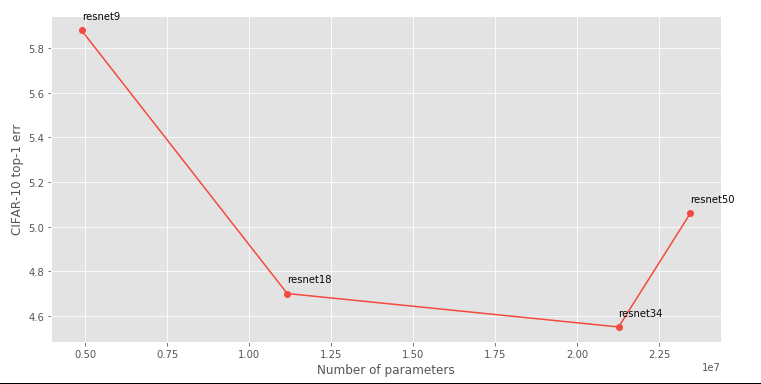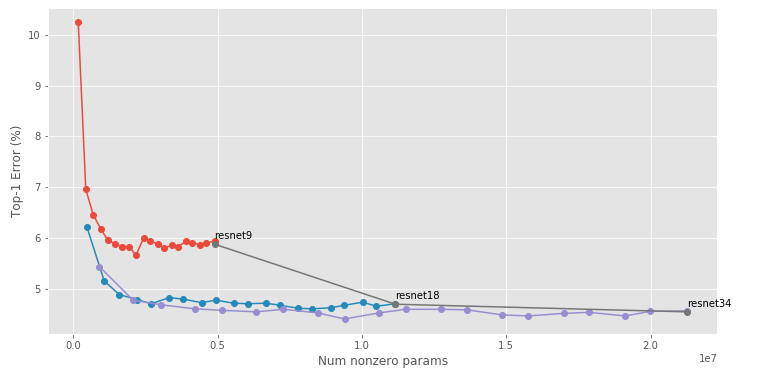A PyTorch implementation of this paper.
To run, try:
python train.py --model='resnet34' --checkpoint='resnet34'
python prune.py --model='resnet34' --checkpoint='resnet34'The core principle behind the training/pruning/finetuning algorithms is as follows:
from models import get_model
from pruners import get_pruner
model = get_model("resnet18")
pruner = get_pruner("L1Pruner", "unstructured")
for prune_rate in [10, 40, 60, 80]:
pruner.prune(model, prune_rate)We can choose between structured/unstructured pruning, as well as the pruning methods which are in pruners (at the time of writing we have support only for magnitude-based pruning and Fisher pruning).
In order to add a new model family to the repository you basically just need to do two things:
- Swap out the convolutional layers to use the
ConvBNReLUclass - Define a
get_prunable_layersmethod which returns all the instances ofConvBNReLUwhich you want to be prunable
Given a family of ResNets, we can construct a Pareto frontier of the tradeoff between accuracy and number of parameters:
Han et al. posit that we can beat this Pareto frontier by leaving network structures fixed, but removing individual parameters:




